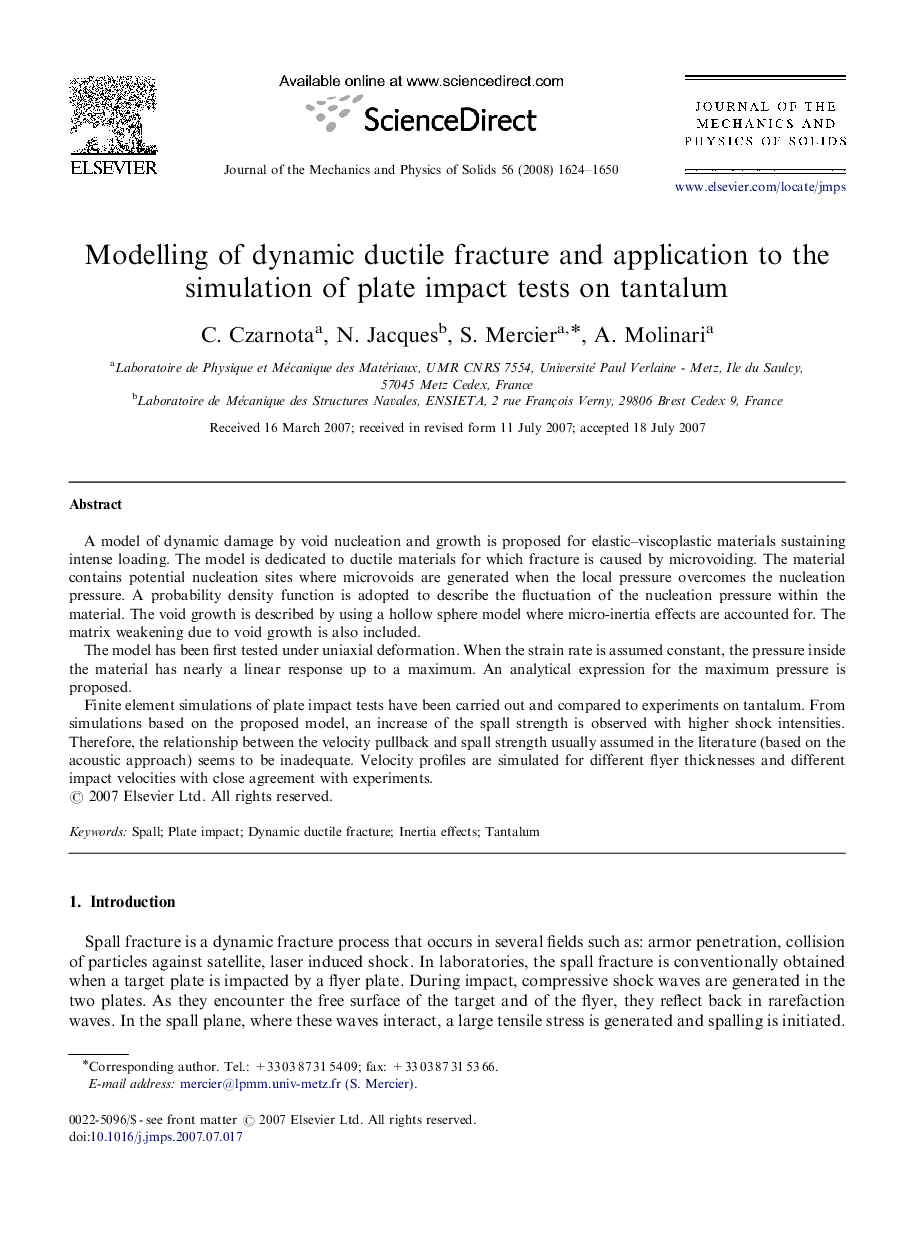| Article ID | Journal | Published Year | Pages | File Type |
|---|---|---|---|---|
| 800069 | Journal of the Mechanics and Physics of Solids | 2008 | 27 Pages |
A model of dynamic damage by void nucleation and growth is proposed for elastic–viscoplastic materials sustaining intense loading. The model is dedicated to ductile materials for which fracture is caused by microvoiding. The material contains potential nucleation sites where microvoids are generated when the local pressure overcomes the nucleation pressure. A probability density function is adopted to describe the fluctuation of the nucleation pressure within the material. The void growth is described by using a hollow sphere model where micro-inertia effects are accounted for. The matrix weakening due to void growth is also included.The model has been first tested under uniaxial deformation. When the strain rate is assumed constant, the pressure inside the material has nearly a linear response up to a maximum. An analytical expression for the maximum pressure is proposed.Finite element simulations of plate impact tests have been carried out and compared to experiments on tantalum. From simulations based on the proposed model, an increase of the spall strength is observed with higher shock intensities. Therefore, the relationship between the velocity pullback and spall strength usually assumed in the literature (based on the acoustic approach) seems to be inadequate. Velocity profiles are simulated for different flyer thicknesses and different impact velocities with close agreement with experiments.
